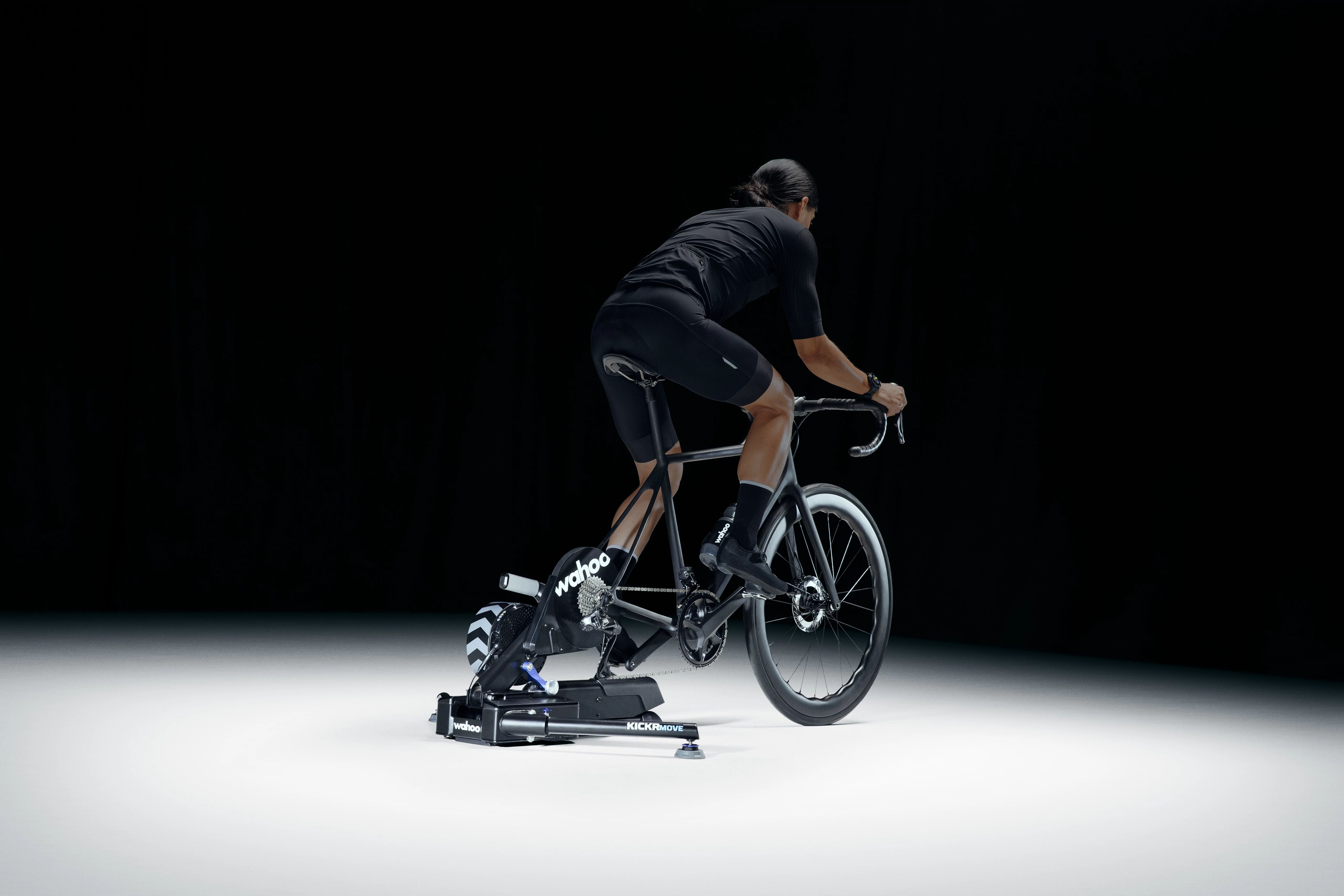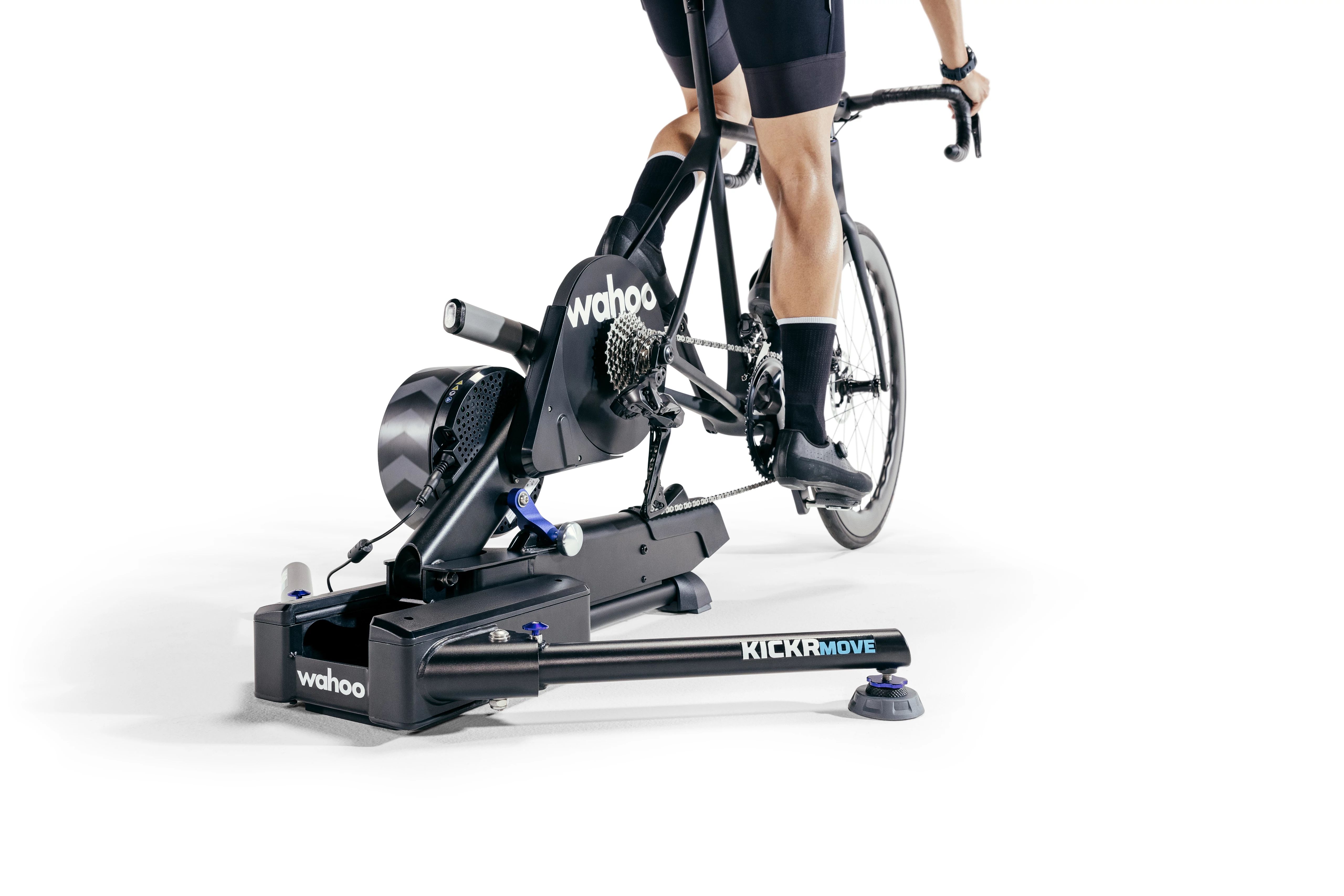Kickr Move: Wahoo launches new indoor cycling trainer after ‘horrible’ period for bikes
Home fitness has seen astonishing boom and busts in recent years – and Wahoo’s new smart trainer marks the first product after it took the brunt of a ‘really, really tough year’

Your support helps us to tell the story
From reproductive rights to climate change to Big Tech, The Independent is on the ground when the story is developing. Whether it's investigating the financials of Elon Musk's pro-Trump PAC or producing our latest documentary, 'The A Word', which shines a light on the American women fighting for reproductive rights, we know how important it is to parse out the facts from the messaging.
At such a critical moment in US history, we need reporters on the ground. Your donation allows us to keep sending journalists to speak to both sides of the story.
The Independent is trusted by Americans across the entire political spectrum. And unlike many other quality news outlets, we choose not to lock Americans out of our reporting and analysis with paywalls. We believe quality journalism should be available to everyone, paid for by those who can afford it.
Your support makes all the difference.Wahoo has launched the Kickr Move, a new indoor cycling trainer aimed at improving the experience of riding indoors - and overcoming a range of problems experienced by home training companies in recent years.
The new Kickr Move adds movement to indoor cycling. Until now, riding a bike indoors has almost uniformly meant mounting a bike onto a smart trainer that allows for little movement, either sideways or forwards.
That lack of movement in turn leads to problems with comfort, as well as realism, given that riders are stuck in the same position. In recent years, indoor cyclists have undertaken increasingly complicated ways of solving that problem, including putting their bikes and turbo trainers onto large “rocker plates” – essentially big wooden platforms intended to allow them to move a little more.
Wahoo said that building a system like that was never on the table. While those rocker plates showed there was clearly an "unmet need", the company's founder Chip Hawkins told The Independent that "doesn't make any sense at all" and that the company therefore set about building a new kind of solution.

Without that kind of movement, the forces that usually move a bike do not happen on a fixed trainer, which leads to "unnatural pushing and pulling", Hawkins said, which can make long rides inside uncomfortable and unrealistic. Fixing that added a completely different appeal that aims to make indoor riding more appealing, he said.
Wahoo did so by taking its existing smart trainer and essentially mounting it on a track, to allow movement back and forth, with about 14cm of space back and forth. If a rider gets out of the saddle, for instance, the bike will drop back and then forward again – something that’s so natural in the real world that it hardly takes any thought, but which has been almost entirely missing in indoor cycling. (Wahoo’s rival, Tacx, released its own “Motion Plates” last year, but they are added on to the trainer separately.)
The Wahoo Kickr that is on the market today looks almost identical to the one sold ten years ago, though there has been the addition of new technologies such as built-in WiFi; the new Move is the first noticeable different smart trainer Wahoo has released in years. Even in the new release, the changes are minimal: the Kickr Move takes most of the components from Wahoo’s existing smart trainer and puts them in that track. At the same time, it has also announced a new, cheaper version of its premium Kickr Bike, an entire indoor bike, aimed at broadening the appeal.
But even if the changes are humble, the new Kickr Move marks the first major change to the design of indoor bike training equipment in years. And, perhaps more importantly, they come at a time when the future of indoor cycling's future is being decided.
Indoor cycling as an industry and an activity has been no stranger to dramatic movements in recent years. When the pandemic began, early in 2020, many took to working out indoors, and the connected fitness and indoor training industry experienced a surge in demand so strong that it became a problem.
For the first year, Wahoo and other indoor training companies couldn't make enough stock to sell, and as soon as turbo trainers appeared on retailers' websites they would disappear again. Orders came in and shops stocked up heavily, to avoid any similar difficulties in the years to come; factories were coming back online and were ready to make those smart trainers.
"And then everyone went outside," Hawkins recalls. All of the indoor training equipment that had been ordered had nowhere to go. "Our sales took a horrible nosedive."
Prices were reduced to clear out those now full shelves at bike shops, and sales fell too. "It was a really, really tough year last year," Hawkins says.
This time around, as the autumn approaches and trainer season begins again, the industry is having the opposite problem: for the most part, that glut of trainers has been sold, but bike shops are anxious about ordering too much to replace them. What's more, the effect of the pandemic on bikes was much the same – bikes were impossible to buy, so more were made, and they are now stuck on shelves – meaning that those shops might not have space or money to buy trainers even if they wanted to.
At the same time, things were looking especially shaky at Wahoo. At the height of covid – when people wanted indoor fitness equipment, and investors wanted the companies that make them – Wahoo was sold to a private equity firm. Wahoo commanded a chunky valuation as the lockdown sales rolled in, benefiting from the same excitement that also sent the share price of rivals Peloton soaring.
Then lockdowns eased, and people started leaving the house. Interest in indoor cycling started to fall away. Peloton’s stock plummeted; it has lost 97 per cent of its value since its highs in early 2021. Wahoo’s financial analysts started to use words like “unsustainable” about the company, and it looked as if its debt problems could lead the company to collapse.
Some 18 months after a sale built on frenzied excitement about indoor cycling, Wahoo looked in peril. The debt taken on to support the sale was called in and the company was taken over by the banks, and the "shareholders lost everything", Hawkins said. Wahoo's marketing activities went away, product development slowed, staff were let go, and the company looked in danger.
Then Hawkins stepped back into buy the company, along with three other strategic investors. It was a "fresh start", he says, and the company was free of its debt. Wahoo's operations "never really missed a beat" throughout the financial chaos, and so the company was able to get back to work again. "We're not trying to raise quick bucks or anything – I'm really trying to set us up for long-term success, which is exciting", he says.
The Kickr Move and the Bike Shift are the first major new products to come out of Wahoo since all of that happened. As well as the new products, it comes with a new approach: more sustainable packaging, and a new setup experience – as well as a new, higher price. The Kickr Move costs £1,399 – £300 more than the existing Kickr smart trainer, which will stay on the market.
Encouraging people to pay that extra might be difficult, given so many cyclists have just bought trainers in recent years, especially through the pandemic. But Hawkins says that while the market might look mature, there are still plenty of people out there still to be reached. Hawkins' instinct is that indoor cycling is a mature market, but Wahoo's data suggests that only 11 per cent of "committed cyclists" have a smart trainer.
"There is still a tonne of people that haven't discovered smart training yet – I don't know exactly where they are, but it seems like there is a lot of room for kind of continuing to expand the category". The Kickr Move is another attempt to reach those people, as well as being extra innovation intended to make those with older trainers upgrade.
In use, the Kickr Move is considerably more comfortable: it is hard to understand how much discomfort is caused by a lack of movement until you're able to move back and forth. And the relative lack of innovation elsewhere means that setting up the new trainer is familiar and simple, and that it works easily with Wahoo's other products. (The only problem is Wahoo's Kickr Climb, which allows people to tilt the front of their bike up and down as if they were ascending and descending, and which needs an extra foot to be compatible with the Kickr Move, sold separately.)
The new trainer is far from the only innovation planned by Hawkins in the time to come. "You've got other things coming besides this launch," he teases; "we are 10, 12 years old in this market, compared to 150-years or something for cycling. So I think we've got a long way to go."
Join our commenting forum
Join thought-provoking conversations, follow other Independent readers and see their replies
Comments